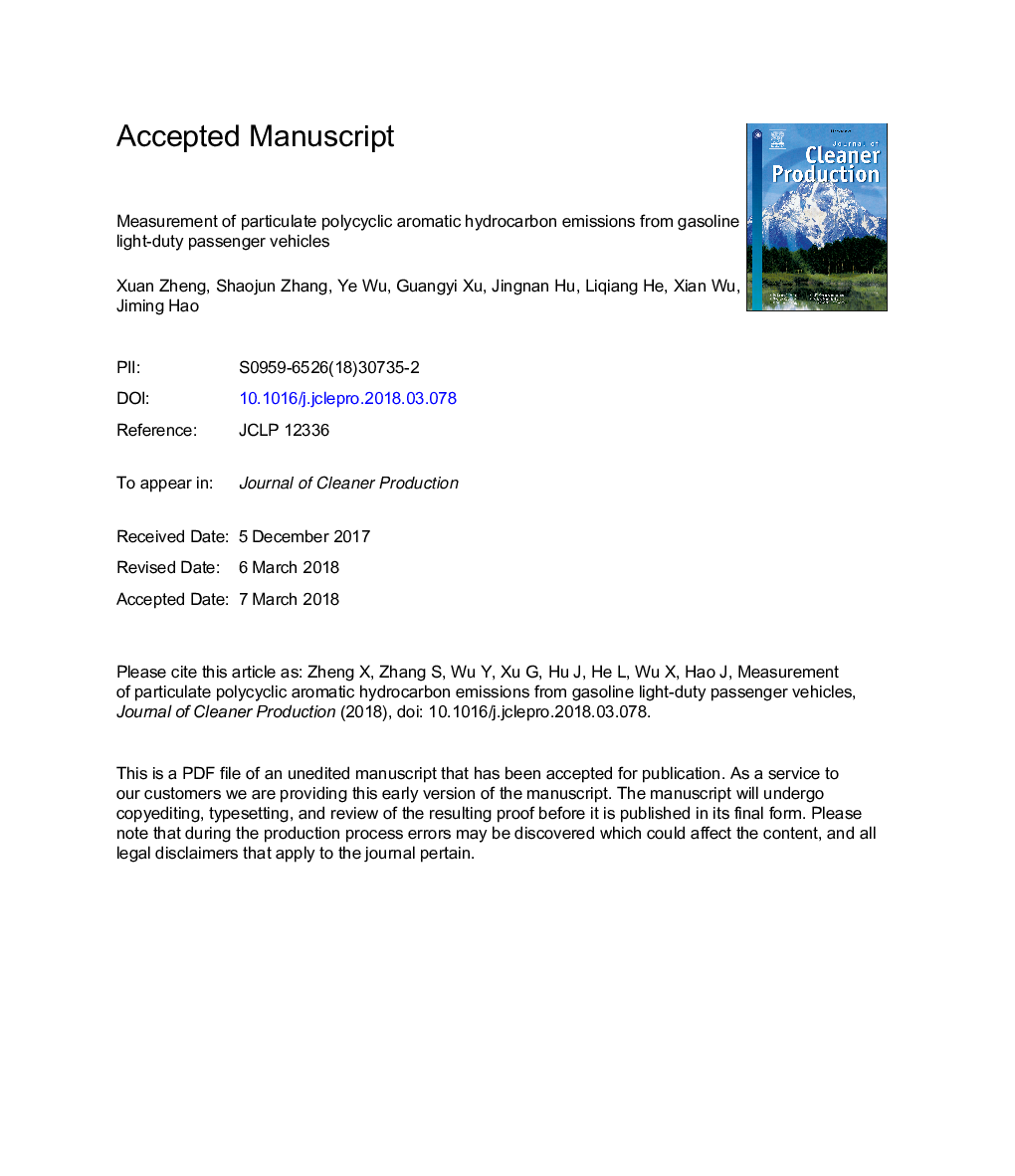| Article ID | Journal | Published Year | Pages | File Type |
|---|---|---|---|---|
| 8096571 | Journal of Cleaner Production | 2018 | 25 Pages |
Abstract
Tackling vehicle emissions is one important task for governmental stakeholders to develop cleaner cities. Gasoline-fueled light-duty passenger vehicles (LDPVs) are intensively used in populous urban areas to meet passenger transportation demand. However, gasoline vehicle emissions raise the health risk due to the proximity of exposure to gasoline exhaust. To better understand the genotoxicity of gasoline emissions, this study is focused on their emissions of particulate polycyclic aromatic hydrocarbons (p-PAHs). We combined dynamometer testing, filter sampling and offline chemical analysis to measure p-PAH emissions from five in-use gasoline LDPVs. The results indicate that the emission factors of tested vehicles under the Worldwide Harmonized Light Vehicles Test Cycle (WLTC) decrease significantly with emission standard, from 11.27â¯Î¼gâ¯kmâ1 for one China 3 LDPV to below 6â¯Î¼gâ¯kmâ1 for the other newer LDPVs (China 4 and 5). Different from the mass distribution of p-PAH species for diesel vehicles, medium-and high-molecular-weight PAHs (e.g., 4, 5, and 6-ring species) are considerably identified from the gasoline particle samples. These medium and high-weight PAHs, such as benzo [a]pyrene (BaP) and dibenzo [ah]anthracene (DaA), in general have much greater toxic equivalency factors than low-molecular-weight PAHs. Furthermore, this study also reports that engine type and driving cycle conditions would have discernible impacts on p-PAH emissions. The gasoline direct injection (GDI) engine-equipped LDPVs would increase p-PAH emissions compared with the counterparts using port-fuel injection (PFI) engines. Cold start and transient driving conditions could also result in increased p-PAH emissions, while high-speed driving conditions tend to reduce the p-PAH content in total particles. The significant health impacts caused by p-PAH emissions from gasoline LDPVs should be concerned, and more effective measures should be taken to eliminate gasoline particle emissions.
Keywords
GDIGPFTEFWLTCPEMsTWCconstant volume samplerCVSTHCPAHPortable emissions measurement systemNOxQA/QCEmission measurementNitrogen oxidesHealth impactgasoline direct injectionparticle numberParticletoxic equivalency factorThree-way catalytic convertercarbon monoxidegasoline Polycyclic aromatic hydrocarbonPolycyclic aromatic hydrocarbonsBlack carbonTotal hydrocarbons
Related Topics
Physical Sciences and Engineering
Energy
Renewable Energy, Sustainability and the Environment
Authors
Xuan Zheng, Shaojun Zhang, Ye Wu, Guangyi Xu, Jingnan Hu, Liqiang He, Xian Wu, Jiming Hao,
